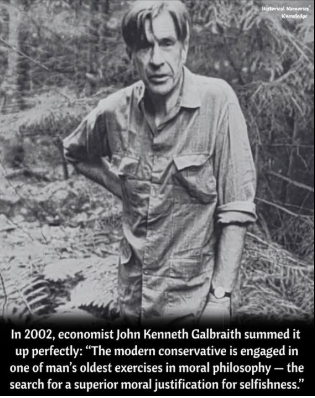
What is Waste to Energy
Waste-to-energy is a process that involves converting waste materials, such as municipal solid waste, into energy. There are several technologies that can be used for waste-to-energy, including incineration, gasification, and pyrolysis.
Incineration involves burning waste materials at high temperatures to produce heat, which can then be used to generate electricity. Gasification involves heating waste materials in the presence of oxygen or steam to produce a gas that can be burned to generate electricity. Pyrolysis involves heating waste materials in the absence of oxygen to produce a gas that can be burned to generate electricity.
Waste-to-energy can provide a source of renewable energy while also reducing the amount of waste that ends up in landfills. However, there are also concerns about air pollution and the emissions that can result from the burning of waste materials. Proper monitoring and management are needed to ensure that waste-to-energy facilities operate in an environmentally sustainable manner.
Renewable Energy Power Plant – Waste to Energy Power Plant List
Countries with waste-to-energy power plants, the number of power plants, and their capacity based on data from the International Renewable Energy Agency (IRENA).
| Country | Number of Waste-to-Energy Plants | Waste-to-Energy Capacity |
|---|---|---|
| China | 339 | 18,620 MW |
| Japan | 29 | 2,086 MW |
| United States | 87 | 2,884 MW |
| Germany | 91 | 2,208 MW |
| Italy | 42 | 1,118 MW |
| France | 126 | 864 MW |
| United Kingdom | 42 | 731 MW |
| South Korea | 25 | 514 MW |
| Canada | 9 | 155 MW |
| Spain | 20 | 145 MW |
| Country | Number of Waste-to-Energy Plants | Waste-to-Energy Capacity |
|---|---|---|
| Sweden | 34 | 2,320 MW |
| Denmark | 30 | 952 MW |
| Austria | 7 | 497 MW |
| Netherlands | 11 | 448 MW |
| Switzerland | 5 | 224 MW |
| Norway | 5 | 201 MW |
| Belgium | 9 | 171 MW |
| Finland | 2 | 80 MW |
| Singapore | 4 | 75 MW |
| Australia | 4 | 63 MW |
| Country | Number of Waste-to-Energy Plants | Waste-to-Energy Capacity |
|---|---|---|
| United Kingdom | 4 | 49 MW |
| Italy | 6 | 46 MW |
| Japan | 5 | 38 MW |
| Canada | 3 | 27 MW |
| France | 4 | 26 MW |
| United States | 2 | 23 MW |
| South Korea | 2 | 13 MW |
| New Zealand | 1 | 1.1 MW |
| Spain | 1 | 1 MW |
| Ireland | 1 | 0.8 MW |
https://www.exaputra.com/2023/05/renewable-energy-power-plant-waste-to.html
Renewable Energy
Do Rich People Seek Justification?
 I’ve always admired this quote from one of history’s greatest economists.
I’ve always admired this quote from one of history’s greatest economists.
At this point, however, I think the “modern conservative” has no interest in “moral philosophy” or “justification” whatsoever. The rich and power, at least in the United States, have only one interest: becoming richer and more powerful.
Makin matters worse: over the years, this has become progressively easier. In 2010, for example, with the Citizens United decision from the U.S. Supreme Court, corporations were granted the same protections that people enjoy under the First Amendment and became legally able to donate as much as they wanted to political candidates.
Yet today, Citizens United is a “baby step” compared to what’s happened under the Trump administration, which could be summarized as: You pay me huge sums to meet with you and tell me what you want, and I make it happen for you.
Here’s an example documented in the New York Times:
President Donald Trump last night hosted a gathering with the highest-paying customers of his personal cryptocurrency business, sparking bipartisan concerns that he’s selling access to the presidency for personal profit.
Renewable Energy
Sins and Virtues
 It’s worth taking a look at the “Deadly Sins” and “Holy Virtues” at left, and asking:
It’s worth taking a look at the “Deadly Sins” and “Holy Virtues” at left, and asking:
Who are we as a nation?
How have we changed overtime?
Have we chosen a leader who will take us in the right direction?
Renewable Energy
Germany Hits Negative Prices As France Goes Subsidy-Free
Weather Guard Lightning Tech

Germany Hits Negative Prices As France Goes Subsidy-Free
This episode covers three major wind power milestones: Germany hitting 51 GW of wind output with negative electricity prices, France launching its first floating offshore wind farm without subsidies, and Australia’s Goyder South becoming South Australia’s largest wind farm at 412 MW.
Sign up now for Uptime Tech News, our weekly email update on all things wind technology. This episode is sponsored by Weather Guard Lightning Tech. Learn more about Weather Guard’s StrikeTape Wind Turbine LPS retrofit. Follow the show on Facebook, YouTube, Twitter, Linkedin and visit Weather Guard on the web. And subscribe to Rosemary Barnes’ YouTube channel here. Have a question we can answer on the show? Email us!
Welcome to Uptime News. Flash Industry News Lightning fast. Your host, Alan Hall, shares the renewable industry news you may have missed.
Allen Hall 2025: There is news today from three continents about wind power in Germany. Last Friday, the wind began to blow storm Benjamins swed across the northern regions. Wind turbines spun faster and faster. By mid-morning wind output hit 51 gigawatts. That’s right. 51 gigawatts the highest. Since early last year, wind and solar together met nearly all of Germany’s electricity needs, and then something happened that would have seemed impossible.
20 years ago, the price of electricity went negative. Minus seven euros and 15 cents per megawatt hour. Too much wind, too much power, not enough demand. Meanwhile, off the coast of Southern [00:01:00] France, dignitaries gathered for a celebration. The Provenance Grand Large floating offshore wind farm. 25 megawatts.
Three Siemens Gamesa turbines mounted on floating platforms. France’s first floating offshore wind project. a real milestone, but here is what caught everyone’s attention. No government subsidies. EDF, Enbridge and CPP investments. Finance the entire project themselves. Self-finance, offshore wind in France.
Halfway around the world in South Australia, Neoen inaugurated Goyder South. 412 megawatts, 75 turbines, the largest wind farm in the state, the largest in Neoen portfolio. It will generate 1.5 TERAWATT hours annually. That’s a 20% increase in South Australia’s total wind generation.[00:02:00]
The state is racing towards 100% net renewables by 2027. Goyder South created 400 construction jobs, 12 permanent positions, over 100 million Australian dollars in local economic impact. Three different stories, three different continents, Europe, Asia Pacific, all celebrating wind power. But there is something else connecting these projects.
Something the general public does not see something only industry professionals understand. 20 years ago, wind energy was expensive, subsidized, and uncertain . Critics called it a fantasy that would never compete with coal or natural gas. Today, Germany has so much wind power that prices go negative.
France builds offshore wind farms without government money. Australia bets its entire energy future on renewables, and here is the number that tells the real [00:03:00] story. In 2005, global wind power capacity was 59 gigawatts. Today it exceeds 1000 gigawatts the cost per megawatt hour. It has dropped about 85%.
Wind power went from the most expensive electricity source to one of the cheapest in about two decades faster than pretty much anyone had predicted, cheaper than anyone had really forecasted. the critics said it could not be done, and the skeptics said it would never compete. The doubters said it was decades away, and they were pretty much all wrong.
Today France celebrates its first commercial scale floating offshore wind farm. And Germany’s grid operator manages negative prices as routine Australia plans to run an entire state on renewable energy. Within about two years, the impossible became inevitable, and you, the wind energy professionals listening to this, you [00:04:00] made it happen.
Engineers, technicians, project managers, turbine designers, grid operators. Every one of you helped prove the skeptics wrong. 20 years ago, you were building a dream. Today you are powering the world.
https://weatherguardwind.com/germany-negative-price-france/
-
Climate Change2 years ago
Spanish-language misinformation on renewable energy spreads online, report shows
-
Climate Change3 months ago
Guest post: Why China is still building new coal – and when it might stop
-
Climate Change Videos2 years ago
The toxic gas flares fuelling Nigeria’s climate change – BBC News
-

 Greenhouse Gases1 year ago
Greenhouse Gases1 year ago嘉宾来稿:满足中国增长的用电需求 光伏加储能“比新建煤电更实惠”
-
Greenhouse Gases3 months ago
Guest post: Why China is still building new coal – and when it might stop
-

 Climate Change1 year ago
Climate Change1 year ago嘉宾来稿:满足中国增长的用电需求 光伏加储能“比新建煤电更实惠”
-

 Carbon Footprint2 years ago
Carbon Footprint2 years agoUS SEC’s Climate Disclosure Rules Spur Renewed Interest in Carbon Credits
-
Renewable Energy4 months ago
US Grid Strain, Possible Allete Sale





